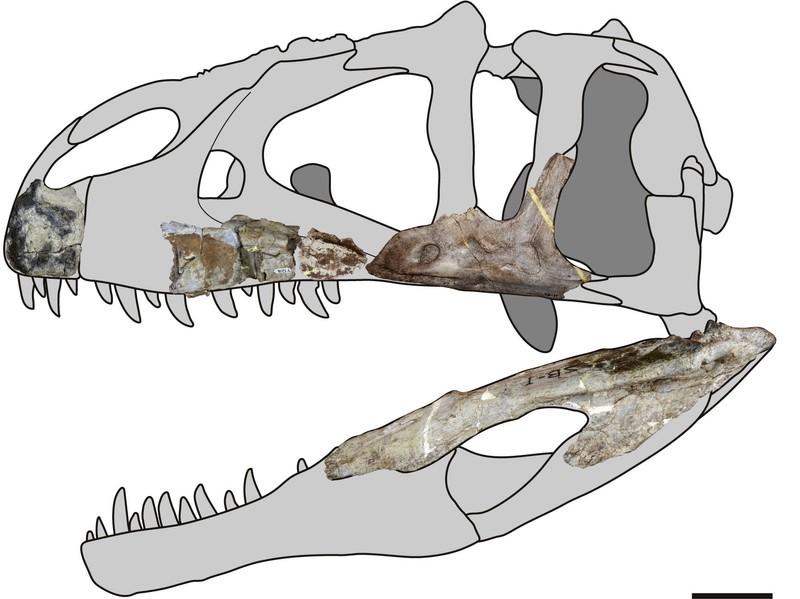A team of paleontologists has announced that they have identified the fossil remains of a new dinosaur in Thailand, a seven-meter-long predator that evolved 113 million years ago.
Most of the land near Ban Saphan Hin in central Thailand is now covered with maize and tapioca. But during the Cretaceous, this region was home to ancient flood plains where a formidable predator prevailed. This new species, dubbed Siamraptor suwati, could measure up to seven meters long from muzzle to tail. For about two meters high. And obviously, it was a fierce one. The details of the study are published in the journal Plos One.
A fast and dynamic dinosaur
Long before the arrival of tyrannosaurs – such as the T-Rex – there was another group of carnivores on earth: the allosauroids. And among these predators, the most dangerous belonged to the group Carcharodontosaurus. During the Cretaceous, they were the bosses, so to speak. These dinosaurs occupied a large part of the space. We had found them everywhere – except in Southeast Asia. A gap that the Siamraptor now fills.
Duangsuda Chokchaloemwong and his team, from Nakhon Ratchasima Rajabhat University (Thailand), announce that they have discovered the remains of at least four specimens. Pieces of skull, backbone and limbs and hips, more precisely. A morphological study then confirmed that it was indeed a brand new species.
It is one of the most important Thai dinosaurs ever discovered, said Steve Brusatte, paleontologist at the University of Edinburgh, Scotland, who revised the study for publication.
All these bones have been dated to about 113 million years ago. Air bubbles identified inside the bones also suggest that these predators were particularly light, and that they breathed very quickly. In other words, these dinosaurs were probably fast and very dynamic.
Let’s remember that a few weeks ago, a team of paleontologists announced that they had identified two other dinosaur species in the region. Two distant cousins of the T-Rex evolving about 100 million years ago.
The first species, named Phuwiangvenator yaemniyomi, was about six meters long (compared to 12 meters for the T-Rex). The second, named Vayuraptor nongbualamphuenisis, measured a little less than five meters.




